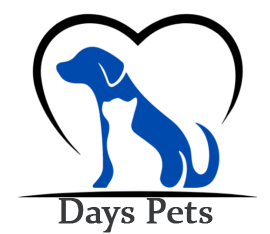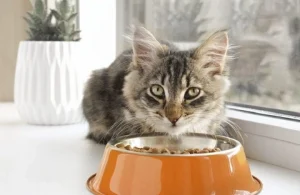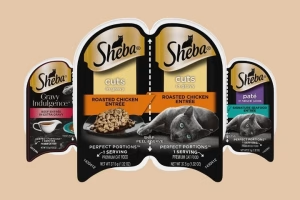hen you think about what’s landing in pets’ bowls these days, there’s a quiet revolution happening—and the cat food aisle is right at the heart of it. As we inch closer to 2025, the world of wholesale cat wet food is evolving faster than ever before. Retailers and distributors who once treated cat wet food as a mere sideline are now realizing that it’s a thriving market segment. According to data from the global pet food market (Grand View Research, 2023), the pet food industry is poised to exceed USD 139.7 billion by 2030, with the wet cat food category expanding notably within that landscape. This growth is no surprise: consumer demand for premium, health-focused, and sustainably sourced options continues to reshape what goes into the cans and pouches lining store shelves.
But it’s not just about “fancier” cat meals. It’s about a complete shift in values and priorities. Buyers—both at the wholesale and retail level—are looking at ingredient labels more closely. They’re assessing the environmental footprint of pet food packaging. They’re comparing flavor varieties as if they were gourmet menus, and paying attention to the certifications that prove a company’s ethical sourcing. Some of the biggest trends come down to what’s inside the product, how it’s produced, how it’s sold, and the story it tells.
If you’re in the wholesale pet treats sector, selling to supermarkets, large distributors, e-commerce platforms like Amazon, or pet specialty retailers, these insights are crucial. Whether you specialize in wholesale cat treats, wholesale dog treats, or wholesale freeze dried dog treats, understanding what’s happening in the adjacent category of cat wet food can inform how you grow your product line, diversify your portfolio, or tap into emerging customer desires. Because, let’s face it—many of the trends we see in cat wet food will likely spill into other categories like freeze-dried treats, toppers, and functional chews.
In this blog, we’ll delve into the top five trends in wholesale cat wet food for 2025 and examine what’s fueling them. Armed with this knowledge, you’ll be better positioned to stock your shelves—or supply your clients—with offerings that not only sell, but also align with the evolving demands of cat owners worldwide.
- Functional Nutrition for Feline Wellness
The Trend at a Glance:
Wet cat foods are no longer about simply “feeding.” They’re about “nourishing” and “supporting.” As more pet parents learn about feline-specific dietary needs, manufacturers are stepping up their game by formulating recipes that deliver targeted health benefits.
What’s Driving It:
The shift towards functional nutrition in cat food is partly inspired by the humanization of pets. Cat owners now think of their feline companions as family members, deserving of top-quality diets that promote longevity and vitality. Data from the American Pet Products Association (APPA) in 2023 suggests that over 41% of U.S. households own at least one cat, and a growing percentage is interested in wellness-oriented feeding. This leads them to seek out products enriched with vitamins, minerals, prebiotics, probiotics, and Omega-3 fatty acids for coat health, gut function, and overall wellness.
What This Means for Wholesalers:
Buyers want wholesale cat wet foods that cater to specific concerns:
Hairball control: Fiber-rich formulas that help cats pass hair more easily.
Urinary health: Specialized mineral balances and cranberry extract to maintain urinary tract function.
Weight management: High-protein, moderate-fat options that keep cats satiated without overfeeding.
Even if you primarily deal in wholesale dog treats or wholesale freeze dried dog treats, your customers may soon request feline formulas that mirror the functional benefits seen in dog products. Consider diversifying your product catalog or partnering with brands that emphasize health and science-backed formulations.
- Sustainability and Transparent Sourcing
The Trend at a Glance:
As the global spotlight increasingly shines on sustainability, eco-friendly packaging, responsibly sourced ingredients, and transparent supply chains are becoming standard expectations rather than nice-to-have perks.
What’s Driving It:
Environmental consciousness is on the rise across every consumer segment. With growing coverage of climate issues, microplastics in oceans, and overfishing concerns, cat owners are asking: “Where did this fish in my cat’s food come from?” Manufacturers are responding with Marine Stewardship Council (MSC) certifications, transparent labeling of ingredient origins, and eco-friendly packaging solutions. According to a 2023 NielsenIQ report, 48% of global consumers say they are willing to pay more for sustainable packaging. This is a huge push factor for wholesalers looking to stay relevant.
What This Means for Wholesalers:
Today, it’s not enough to carry a product that simply says “tuna” or “salmon.” Buyers want to know if the salmon is wild-caught, if the tuna is line-caught, and if the packaging is made from recycled materials. Forward-thinking wholesalers will focus on brands that:
Use packaging made from recycled or biodegradable materials.
Provide sourcing details, like the fishery of origin or the farm collective name.
Have third-party sustainability certifications (e.g., MSC, ASC).
In other words, by 2025, the wholesale cat wet food market will revolve around authenticity. Don’t be surprised if you find yourself fielding more questions about carbon footprints and supply chain audits. Aligning your product selection with ethical sourcing and sustainability narratives will help position your business as a responsible industry player.
- Gourmet and Global Flavor Profiles
The Trend at a Glance:
Cats may not debate the nuances of a French bouillabaisse or a Japanese dashi, but their owners are certainly intrigued by an evolving palate of global tastes. Exquisite, gourmet-inspired cat wet foods featuring novel proteins, broth-infused textures, and culturally inspired recipes are on the rise.
What’s Driving It:
The human food market’s fascination with international cuisine is spilling over into the pet sector. Pet parents who enjoy adventurous eating habits often project these culinary values onto their pets, looking for variety and novelty in the cat’s bowl. According to a 2023 PetfoodIndustry.com feature, exotic proteins such as kangaroo, rabbit, and venison have been gaining traction in niche markets. Broth-based meals, European-style pâtés, and Asian-inspired fish soups are no longer outlandish ideas—they’re sought-after differentiators.
What This Means for Wholesalers:
Stocking a range of flavor profiles can set you apart. Consider carrying lines that offer:
Novel proteins: Quail, duck, venison, and even insect-based proteins (emerging trend) to cater to allergies and niche tastes.
Flavorful broths and gravies: Light, aromatic broths that mimic gourmet restaurant menus.
International flair: Recipes that highlight specific regional tastes, tapping into cultural trends and global influences.
By diversifying flavor options, you not only cater to pickier felines but also to cat parents who want to give their companion a culinary adventure. This also enables cross-promotion with other categories—if you can offer wholesale freeze dried dog treats sourced from similarly exotic proteins, you reinforce the brand image of novelty and premium quality across species lines.
- Tech-Driven Personalization and Subscription Models
The Trend at a Glance:
Technology has seeped into every corner of our lives, and pet feeding is no exception. From apps that track a cat’s nutritional intake to subscription models that deliver customized wet food blends on a monthly schedule, personalization is key.
What’s Driving It:
Consumers expect convenience and customization. E-commerce giants and startups alike are leveraging data analytics to tailor subscription boxes with flavors, nutrients, and quantities that match each cat’s preferences and health goals. According to Packaged Facts (2023), online pet food sales have grown significantly since the pandemic, and direct-to-consumer subscription models remain robust. More pet owners, who are busy professionals, appreciate having the right food show up at their doorstep without guesswork.
What This Means for Wholesalers:
For large-scale distributors, supplying to subscription-box services or online pet portals can open new revenue channels. Consider:
Offering bulk discounts to subscription-based retailers who need consistent inventory.
Investing in digital platforms or partnerships that allow retailers to easily forecast demand and customize orders.
Collaborating with tech-savvy brands that use data insights to refine their recipes over time.
Wholesalers who embrace these tech-enabled solutions can position themselves as go-to partners for modern retailers. Even if you primarily deal in wholesale pet treats, aligning with brands that incorporate personalization features can help you tap into a growing segment of digitally minded consumers.
- Cross-Category Synergies: From Wet Food to Functional Treats
The Trend at a Glance:
The lines between traditional pet food segments—wet food, dry kibble, treats, and toppers—are starting to blur. Cat owners increasingly see these categories as parts of a holistic dietary plan. Wet cat food might be the staple, but it’s complemented by freeze-dried toppers, dental chews, and functional snacks that support overall feline health.
What’s Driving It:
Holistic pet care is trending, and it goes beyond the food bowl. Pet parents often combine multiple product types to create a complete dietary ecosystem. The rise of freeze-dried treats, functional dental chews, and probiotic toppers makes it natural to pair a wet meal with a supplemental treat or a nutritional booster. This synergy creates a loop where retailers benefit from multiple product lines that reinforce each other’s value proposition.
What This Means for Wholesalers:
If you sell wholesale cat wet food, consider diversifying into related product lines that complement it. For example:
Wet cat food + freeze-dried treats: Offer a two-tier product line, where premium cat wet food is paired with gourmet freeze-dried cat treats.
Functional treats to complement main meals: Dental chews for oral health or immune-boosting snacks to supplement the diet’s nutritional profile.
Bundled product offers: Encourage retailers to package wet food cans with functional toppers, enticing customers to buy more in one go.
By creating a well-rounded product portfolio, wholesalers become a one-stop solution. If a retailer can source everything from staple cat wet food to specialized wholesale freeze dried dog treats (for their canine clientele) and cat treats from a single partner, it simplifies the supply chain and builds loyalty.
Integrating These Trends into Your Wholesale Business Strategy
So, how do you put these insights into action? The key is balance. If you’re a wholesaler catering to both brick-and-mortar retailers and online giants like Amazon, consider curating a product portfolio that resonates with each trend:
Functional and Health-Focused: Emphasize SKUs that boast added vitamins, joint support, or hairball control.
Sustainable and Ethical: Highlight lines that use eco-friendly packaging, responsibly sourced fish, and transparent labeling.
Global Gourmet: Stock products with exotic flavors and authentic culinary inspirations to entice adventurous consumers.
Tech-Driven Solutions: Align with subscription-based and personalized brands that rely on data-driven inventory management.
Holistic Category Blending: Combine offerings like wet food, freeze-dried treats, and functional chews to provide a complete solution for retailers’ needs.
Where to Start Exploring These Trends
If you are looking to experiment with these trends, consider partnering with suppliers who are already ahead of the curve. Look for evidence of:
Industry Certifications: MSC for sustainable seafood, USDA Organic for natural ingredients.
Transparent Customer Communication: Brands with clear online presence and thorough product descriptions.
Innovative Product Development: Companies launching new flavor lines or integrating with pet-health tracking apps.
For a curated selection of wholesale pet treats—ranging from wholesale cat treats to wholesale freeze dried dog treats—check out Pack’n Pride (packnpride.com). While their core focus may be on treats, exploring their offerings can give you a sense of quality standards and product variety that align with these overarching trends. Even if you source your wet cat food elsewhere, understanding how holistic product lines come together can guide your strategic decisions.
Looking Ahead
By 2025, the cat wet food market is set to be more dynamic, transparent, and interconnected than ever. As these five trends indicate, it’s not just about putting a product on the shelf and hoping it sells. It’s about understanding the consumer’s mindset:
They want more than nutrition; they want functional health benefits.
They demand to know the story behind the product, from its sourcing to its packaging.
They crave variety, flavor, and even cultural nods in their cats’ meals.
They appreciate convenience, personalization, and tech-driven solutions that simplify their buying journey.
They see pet feeding as holistic, blending multiple categories and products into a well-rounded diet.
By taking these trends seriously and adapting your wholesale strategy accordingly, you position yourself for success in a competitive and evolving market. As 2025 approaches, it’s the wholesalers who understand these shifts and act on them who will thrive—and help their retail partners do the same.




